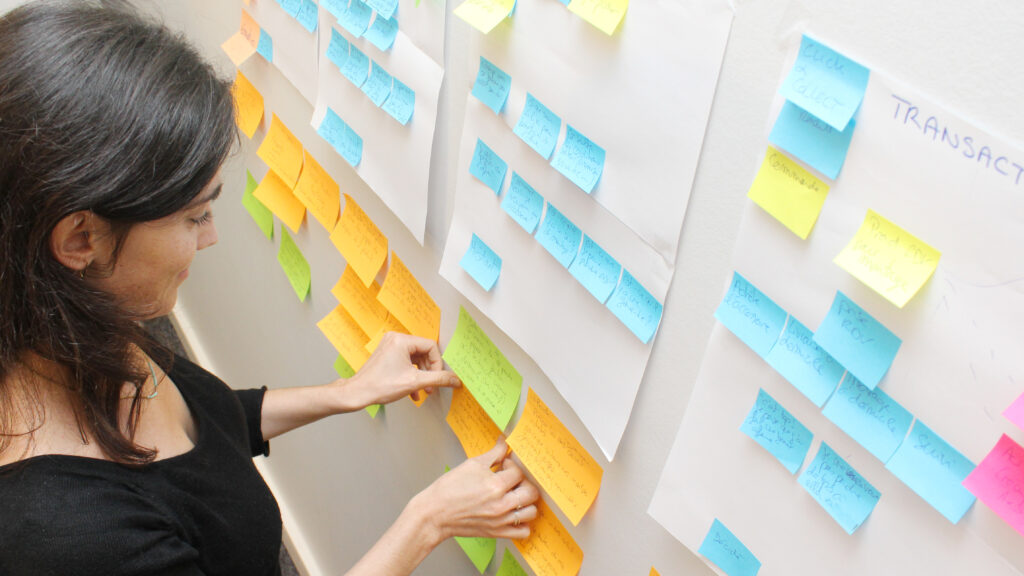Beyond algorithms, A/B testing and data analysis, the goal of data visualization is to develop user understanding by taking a better approach to the data collected.
Within a company, it is sometimes difficult for teams to understand and analyze the data they receive: A/B tests, market research, surveys...
So what should we take into account in this mass of data and how can we exploit it?
To understand what data visualization is, we'll go through elimination by first showing what it isn't, then we'll explain how data visualization can improve the user experience.

Myth 1: Data is all about numbers
The analysis of activity on a site is generally represented by numerical indicators such as the number of visits, the time spent by the user on the site, outgoing clicks. In these cases, the numbers are a simple way to transcribe a person's habits.
However, reducing the habits of millions of people to a few numbers may not be as useful and reliable as one might think. Indeed, analytical studies cannot provide all the answers relating to human behavior, which is sometimes subjective and changes depending on the individual: What is the user's feeling? What appealed to him the most about the interface? Why will he recommend her?
As in social studies and medicine, qualitative studies are not considered safe. The same goes for data visualization. The only real data that can be considered are the traces left by users whatever the source.
Myth 2: Data is objective
Quantitative data is generally benchmarks reflecting actions. This data is then compiled by machines and not by people. Since these are indisputable facts, these data usually carry more weight.
Even if the amount of data is enormous, it should not however be considered as being completely objective, because even if these are collected by machines they remain interpreted by humans (where error is possible).
For example, social network data only shows the action of certain types of populations: Subscribers on Twitter or Facebook who use certain hashtags, fans and followers of a page... In other words, people who agree to participate in a study correspond to a minority and do not reflect the entire population. By taking these data as true truths, we end up falling into prejudices.
As with Heisenberg's uncertainty principle the results can change simply by observing the subject. The environment can be neutral, the behavior of the user can be changed because it is observed. There are very few studies that really leave the user the opportunity to express themselves purely and simply. This is also the case with quantitative studies where behaviors can be changed depending on how the questions are asked.

In addition, when we compare studies carried out remotely and interviews with an observer, we notice differences in behavior. People tend to give slightly more positive impressions when they are with an observer than when they return home.
Data, big or small, cannot be 100% secure. They have their limits and prejudices can modify their interpretations.
Myth 3: Bigger is better

This craze for Big Data suggests the power to reveal humanity's greatest secrets and predict the future. Admittedly, sometimes when it comes to data, the more information the better.
This is also valid when dealing with subjective elements, such as emotions based on personal experiences: The more answers there are, the more reliable the data can be.
When thinking bigger, we tend to look at many metrics. But the huge amount of data is also a matter of diversity and by extension, of diverse sources.
You can't expect to get all the answers you want about user behavior just by looking at the numbers. All data gathered, qualitative and quantitative, should be used to improve both the development and appearance of a product. It's more about creating and classifying the elements gathered in a logical order in order to gauge them, understand them and define a path to follow.
Data from different sources provides a more nuanced view that leads to a consistent result.
The bigger, the better. The larger, the better.
Myth 4: Data is only for Managers (not Designers)
Facts are often used to validate decisions in the design of sites or applications.
It is sometimes tempting to use this data to support one's opinion, a personal choice or to resolve conflicts between teams. Using it as factual evidence is a small part of the goals of data visualization. If you are using data visualization in design there are 3 ways to approach it:
- Using data for product improvement is equivalent to iterating.
- Retrieve data in a given period, according to version changes or even by comparing yourself to competitors.
- Using data means analyzing different studies to discover new patterns and trends.
Data is sorted according to expectations, therefore a manager and a UX Designer will analyze different types of data.
Each team has its own references and has no knowledge of the data belonging to the other teams. Data visualization isn't just about arbitrating right from wrong, it's about improving and discovering new possibilities. It's a new way of understanding people's usage habits via technology.
Myth 5: Data analytics is a brake on innovation
Analytics is seen as the antithesis of innovation in a way. This can be explained in 3 ways:
- We use the results collected retrospectively. Although they help discover new patterns and trends, they do not help predict behavior.
- Data visualization is more about methodology than strategy. Quantitative studies associated with A/B testing can be useful for correcting errors or making improvements to a product, but they do not allow the creation of a unique user experience.
- The data collected is not just the tip of the iceberg. Knowing where users clicked, how many times they scrolled helps us define how to create a product. But they don't add much to the user's feelings about the design, their motivations, their expectations or their feelings.
There is necessarily a utility to the accumulation of this data. The problem isn't the data itself, it's how it's used.
Myth 6: There is only one right way to use data in design
In reality, there is no single common rule that can work for any team. However, a few methodologies can work relatively well:
- Use data from different sources: audience analysis, A/B tests, social media, customer services, user tests, etc.
- Take into account the context in which the tests are carried out. Whatever the type of test, the context sometimes influences user feedback, it is important to understand it.
- Ensure that the data takes into account the state of mind of the people tested. For this, reference averages are used.
- Use data to track changes in habits and needs, explore new patterns, and investigate problems more deeply.
- Decide on the type of data useful for drawing conclusive results.
- Create a way to share and exchange with the teams on what has been collected and reflect together on a common basis.

The use of data must go beyond algorithms, user tests or audience analysis. The goal is to use this data to gain a better understanding of user habits.
Thierry Andrianalisoa - DA @UX-Republic
STORYTELLING: THE ART OF CONVINCING # Paris
SMILE Paris
163 quay of Doctor Dervaux 92600 Asnières-sur-Seine
UX/UI ECO-DESIGN # Paris
SMILE Paris
163 quay of Doctor Dervaux 92600 Asnières-sur-Seine
DESIGN THINKING: CREATING INNOVATION # Belgium
UX-REPUBLIC Belgium
12 avenue de Broqueville - 1150 Woluwe-Saint-Pierre
MANAGING AND MEASURING UX # Paris
SMILE Paris
163 quay of Doctor Dervaux 92600 Asnières-sur-Seine
DESIGN SPRINT: INITIATION & FACILITATION # Paris
SMILE Paris
163 quay of Doctor Dervaux 92600 Asnières-sur-Seine
UX-DESIGN: THE FUNDAMENTALS # Belgium
UX-REPUBLIC Belgium
12 avenue de Broqueville - 1150 Woluwe-Saint-Pierre
GOOGLE ANALYTICS 4 #Paris
SMILE Paris
163 quay of Doctor Dervaux 92600 Asnières-sur-Seine
ACCESSIBLE UX/UI DESIGN # Belgium
UX-REPUBLIC Belgium
12 avenue de Broqueville - 1150 Woluwe-Saint-Pierre












